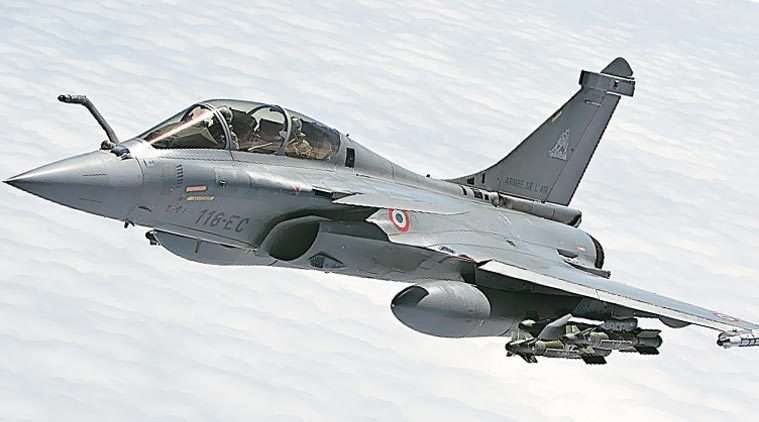Rafale Fighter Deal on CAG Radar
6 June 2018
The Rafale fighter deal is on the radar of the Comptroller and Auditor General, a source in the national auditor said Tuesday. Also under scrutiny is the Goods and Services Tax Network (GSTN) that provides the IT backbone of the GST system.
“The Rafale deal has to be audited by the CAG. For us, it is a routine audit,” the source said of the fighter deal with the French for the IAF — the deal has been at the centre of a political row with the Opposition Congress alleging that the NDA government paid much more than what Dassault Aviation, the Rafale manufacturer, had quoted earlier when the UPA was in power.
“We have to do the Rafale audit like any high value transaction needs to be audited,” the source said, but did not spell out a timeline for its completion. The source did, however, indicate that audit of a high value transaction, unlike a performance audit, is completed quickly and is always a “priority”.
In February, The Indian Express cited official sources to report that the NDA government negotiated procurement of 36 Rafale fighter jets from France, under a government-to-government deal, for a price lower than the one negotiated by the UPA under a commercial bid by Dassault Aviation.
The figure of Rs 525 crore or approximately Euro 79 million per Rafale aircraft which Opposition parties were citing, government sources had said, was based on the manufacturer’s 2007 bid at the then exchange rate (I Euro = Rs 66.60). This, sources said, was the cost of a ‘bare’ Rafale, without weapons, avionics, radars, missiles and other specific customisations for the IAF.
“The IAF told us that because we were buying only 36 Rafale and not 126, they needed them to be more potent. Meteor missiles, 75 per cent serviceability and some special requirements were insisted upon by the IAF. It even asked for two separate maintenance support flights for redundancy. These imposed additional costs which were not even thought of in 2011. They are two separate packages,” government sources had said.
The CAG is also auditing the GSTN. Apart from several parameters being looked into the audit of GSTN, the CAG audit is likely to scan the issue of apportionment of Integrated Goods and Services Tax (IGST). “Whether the IGST apportionment is correct and timely is one important parameter,” the source said.
Ever since former Union Home Secretary Rajiv Mehrishi took charge as its chief last September, the CAG is learnt to have been actively considering an ‘outcome audit’ in its bouquet of audits. CAG audits are currently grouped into three broad categories — financial, compliance and performance. While the financial audit focuses on receipts and payments by the government, the compliance audit focuses on compliance with government guidelines, and the performance audit looks at the performance of government policies and schemes.
The proposed outcome audit being considered is likely to go beyond the usual performance parameters of the scheme to measure the intended achievements of a government initiative. For example, while the number of schools, number of class rooms, appointment of teaching staff may be part of the performance audit, the proposed audit mechanism will test whether these have enhanced educational outcomes. Or, toilet construction may be part of a performance audit, but whether it has resulted in usage and consequent reduction in open defecation is the intended outcome.
“This is complicated territory. But we are thinking about it. We have already conducted a workshop on it. Now we are planning to consult people outside to narrow down its feasibility,” the source said.
Source: IE

